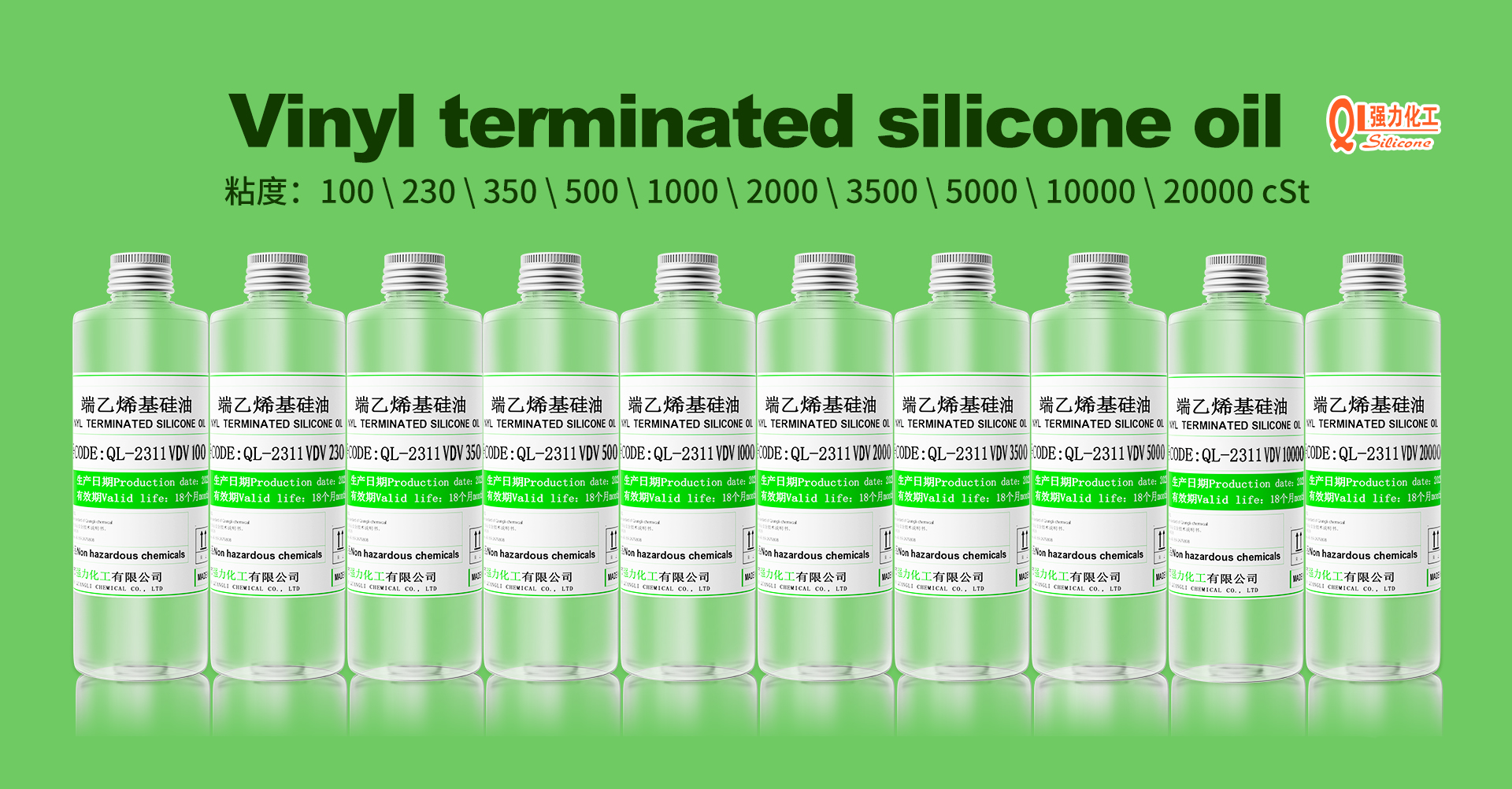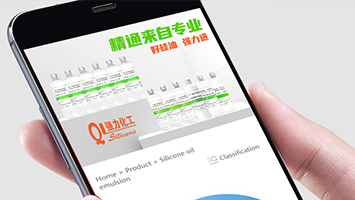Silicone rubber has unique comprehensive properties, especially the biocompatibility of silicone rubber is a key characteristic. It has been successfully used in occasions where other rubbers are ineffective, solved many technical problems, and met the needs of modern industry and society. various needs of daily life. Like other rubbers, silicone rubber can be processed into various profiles, rubber hoses, rubber strips, rubber rollers, rubber cloths and other products; room temperature vulcanized silicone rubber can be used for large-scale construction on site and is easy to use. In terms of sustainability, silicone rubber has many excellent properties, but its price is relatively high. Therefore, the recycling of waste rubber has economic significance for saving raw materials and reducing production costs. The silicone rubber regeneration process includes selection, dicing, cracking, refining and batching. That is, the waste rubber is first cleaned to remove garbage and impurities, then selected and classified, cut into small pieces, and sent to cracking. There are many cracking methods, including mechanical rolling cracking, direct steam thermal cracking, dry thermal cracking and chemical cracking.
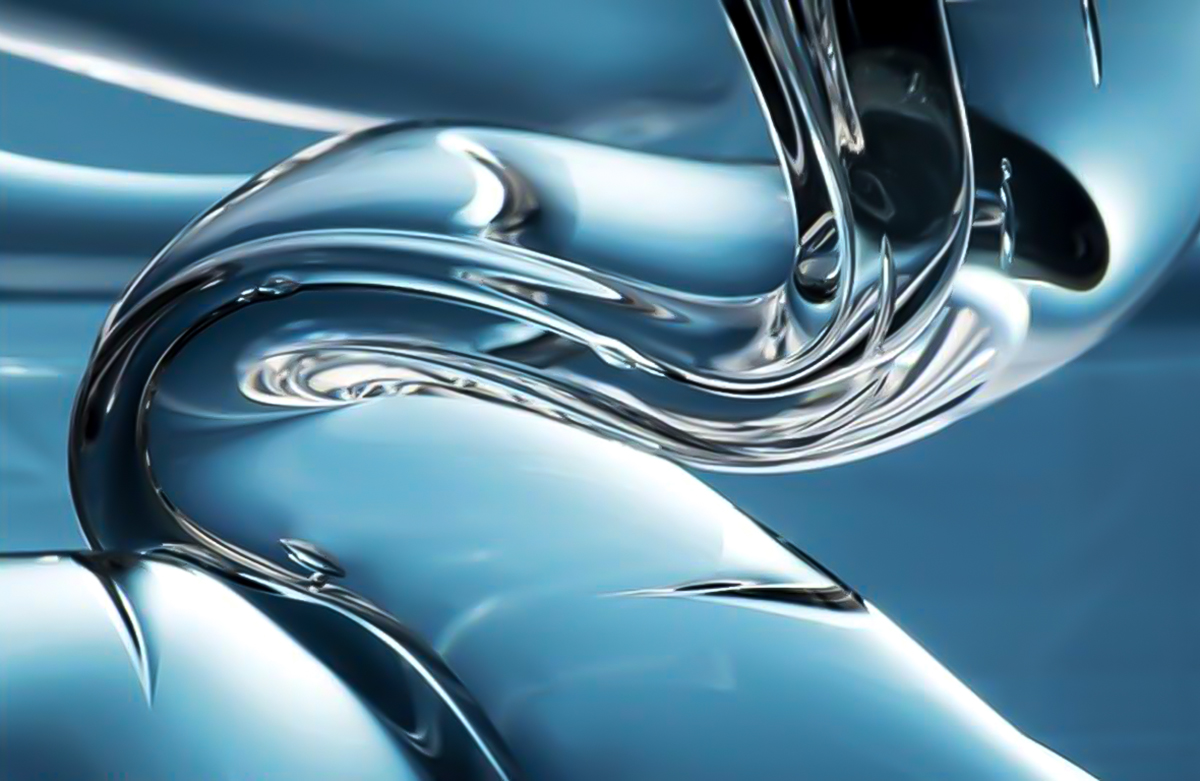
1. Application field:
The electronics and electrical industries are the earliest fields where silicone rubber is used as an insulating material and has a large demand. Silicone rubber is mainly used in TV anode covers, high voltage protective covers, high voltage lead wires, refrigerator defroster wires, power or signal transmission wires and cables, etc. Insulators made of silicone rubber will replace ceramic products and are widely used in power transmission lines, especially ultra-high voltage lines. Conductive silicone rubber is used in electrical contacts and liquid crystal display contacts of electronic computers, telephones and other instruments. Wires and cables made of flame-retardant and radiation-resistant silicone rubber are widely used in atomic power stations. Silicone rubber heating sheets and heating belts are used to control the working temperature of various precision instruments and oil pipelines, and are used as heating blankets for physiotherapy heat compresses in medical treatment. Room temperature vulcanizing silicone rubber can be used as a potting material for waterproof, moisture-proof and shock-proof.
(1) Automobile industry
The application of silicone rubber in the automobile industry is growing rapidly. Silicone rubber (especially silicone rubber with various characteristics) can resist the erosion of fuel and lubricating oil, improve the performance of various parts of automobiles, and reduce maintenance costs. It can be used in automobile ignition wires, spark plug protection covers, heating and radiator hoses, muffler linings, battery connectors, and fuel pumps made of fluorosilicone rubber. With the development of vehicle electronics and electrification, room temperature vulcanized silicone rubber is widely used in potting materials for electronic parts, electrical assemblies, windshields, seals around the car body, and adhesive sealants for reflectors.
(2) Electronics and electrical industry
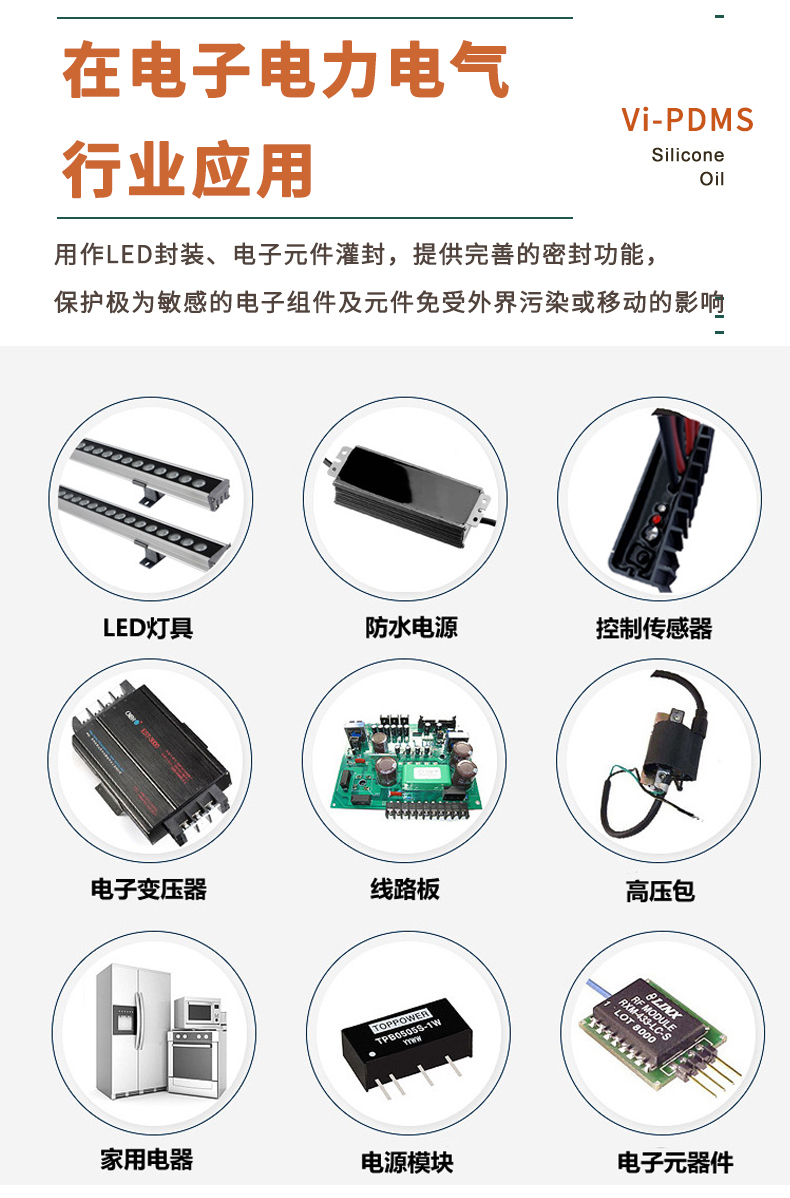
Silicone rubber has been widely used in pump seals of dishwashers and washing machines due to its heat-resistant detergent properties. Silicone rubber is ideal for use as gaskets on appliances such as coffee pots, electric fryers and steam irons. The ear and head pads of the stereo earphones are made of silicone rubber, which can eliminate external noise and is soft and comfortable.
(3) Aerospace industry
Silicone rubber is an indispensable high-performance material in the aerospace industry. It can withstand the ultra-cold space and the scorching heat of returning to the atmosphere, prolong the life of aircraft parts, reduce maintenance costs, and reduce accidents. Mainly used for aircraft body cavity seals, electrical connectors, sealed switches, dustproof and waterproof covers, gasket gaskets, "O" rings for jet engines and hydraulic devices, oxygen masks, regulating diaphragms, hot air ducts and Radar wireless shock absorbers, etc. Burn-resistant silicone rubber is suitable for rocket fuel valves, power source cables and rocket silo cover coatings, so as not to be burned by rocket jets. Room temperature vulcanized silicone rubber can be used as the airtight seal of the body, window frame seal and shockproof, moisture-proof potting material.
(4) Construction Industry
Silicone rubber has good weather resistance and workability, and has been widely used as an adhesive sealant in the construction industry, surpassing other types of sealants. In recent years, a low-modulus high-elongation two-component sealant has been developed, which is used for large components such as concrete prefabricated parts and curtain walls with large joint movement. RTV silicone rubber is also used for sealing joints of asbestos cement boards, bathroom tile joints and toilet utensils. With the decline of rubber prices in the future, the scope of application will be further expanded, such as replacing asphalt and neoprene in the application of road joints. High-temperature vulcanized silicone rubber sponge strips are used as sealing strips for doors and windows of buildings.
(5) Medical field
Silicone rubber has good biocompatibility, small reaction to the body, stable performance, low hemagglutination, can withstand high temperature and high pressure for multiple cooking, and can be processed into products of various shapes, such as films, sponges, and air bags. One of the most widely used materials in medicine.
(6)Other fields
In addition to the various applications mentioned above, the application of silicone rubber in the fields of textiles, printing, machinery, plastics, chemistry, papermaking, food and cosmetics has also increased significantly. Typical products are rollers made of silicone rubber for heat setting of fabrics, plastics, embossing, calendering and fusing in copiers. Air-conditioning windows made of silicone rubber films have been used to store fruits and vegetables. In addition, silicone rubber has also achieved good results as a sealing material in textile high-temperature equipment and equipment with high concentrations of alkali, sodium hypochlorite and hydrogen peroxide.
2. Sustainability and development
Silicone rubber has many excellent properties, but the price is high, so the recycling of waste rubber is of economic significance for saving raw materials and reducing production costs.
Silicone rubber regeneration process includes selection, cutting, cracking, refining and batching. That is, the waste rubber is first cleaned to remove garbage and impurities, then selected and classified, cut into small pieces, and sent to cracking. There are many cracking methods, including mechanical rolling cracking, direct steam thermal cracking, dry thermal cracking and chemical cracking. Among them, the former two are more commonly used and simple, which are mainly introduced as follows.
(1) Mechanical rolling cracking
Mechanical rolling cracking can be carried out on ordinary rolling mills. The waste rubber that is about to be cut into small pieces is put on the rubber mixing machine for rolling, and the roll distance should be larger at the beginning, and the roll distance should be reduced after the rubber material is covered with rolls. When it is tied finely, it can be thinned. After gradually forming a continuous strip shape, it can be stored in the next piece. The disadvantage of this method is that the waste rubber using fumed white carbon black is not easy to crush, and the rolling time is long. In order to shorten the rolling time and improve the rolling regeneration efficiency and reclaimed rubber quality, precipitated silica can be added appropriately (about 10%) during the rolling process to crush and mix different soft and hard rubber materials to shorten the regeneration time.
(2) Direct steam pyrolysis
Direct steam thermal cracking is to put small pieces of waste rubber into a steam vulcanization tank with a pressure of about 0.5MPa (temperature 150-160°C) for 3-4 hours. If the hardness of waste rubber is high, the processing time can be extended appropriately, but it should not be too long, so as to avoid excessive degradation of waste rubber and deterioration of performance. The heat-treated waste rubber is fully crushed on the rubber mixing machine, and then thinly passed out after being wrapped with rolls. Generally, a small amount of alcohol can be added during crushing to increase mechanical friction and improve rolling efficiency. In case of sticky rollers, some white carbon black or other inorganic fillers can be added. The reclaimed rubber obtained by this method has uniform quality and high plasticity. The disadvantage is that the processing time is long and it is difficult to remelt after storage. If a structure control agent, such as diphenylsilanediol or hydroxyl silicone oil, is added to the compound, it is easier to remill.
The performance of reclaimed rubber is generally worse than that of raw rubber, with lower tensile strength, elongation at break, tear strength and compression set resistance, and higher hardness. Its tensile strength is generally 2.9 to 3.8
MPa, the elongation at break is 100%~150%. With the increase of filler content, the hardness increases and the elongation at break decreases. When reclaimed rubber is used alone, in addition to adding reinforcing agent white carbon black, weak reinforcing fillers (such as titanium dioxide or zinc oxide 50-100 parts) can also be added to reduce costs. An appropriate amount of vulcanizing agent (about 1 times higher than that of ordinary raw rubber) should be added to keep the vulcanized rubber at a certain hardness. When raw rubber is mixed with 30%-50% reclaimed rubber, the physical properties of the vulcanized rubber do not change much (only the tensile strength and elongation at break are slightly lower), and it can withstand high temperature aging at 250-300 °C. The highest blending amount of reclaimed rubber can reach 70% to 80%. Reclaimed rubber can be used alone to make rubber sheets, and should not be used alone as extruded products. If the reclaimed rubber is filtered and used together with raw rubber, it can be used to make extruded products.
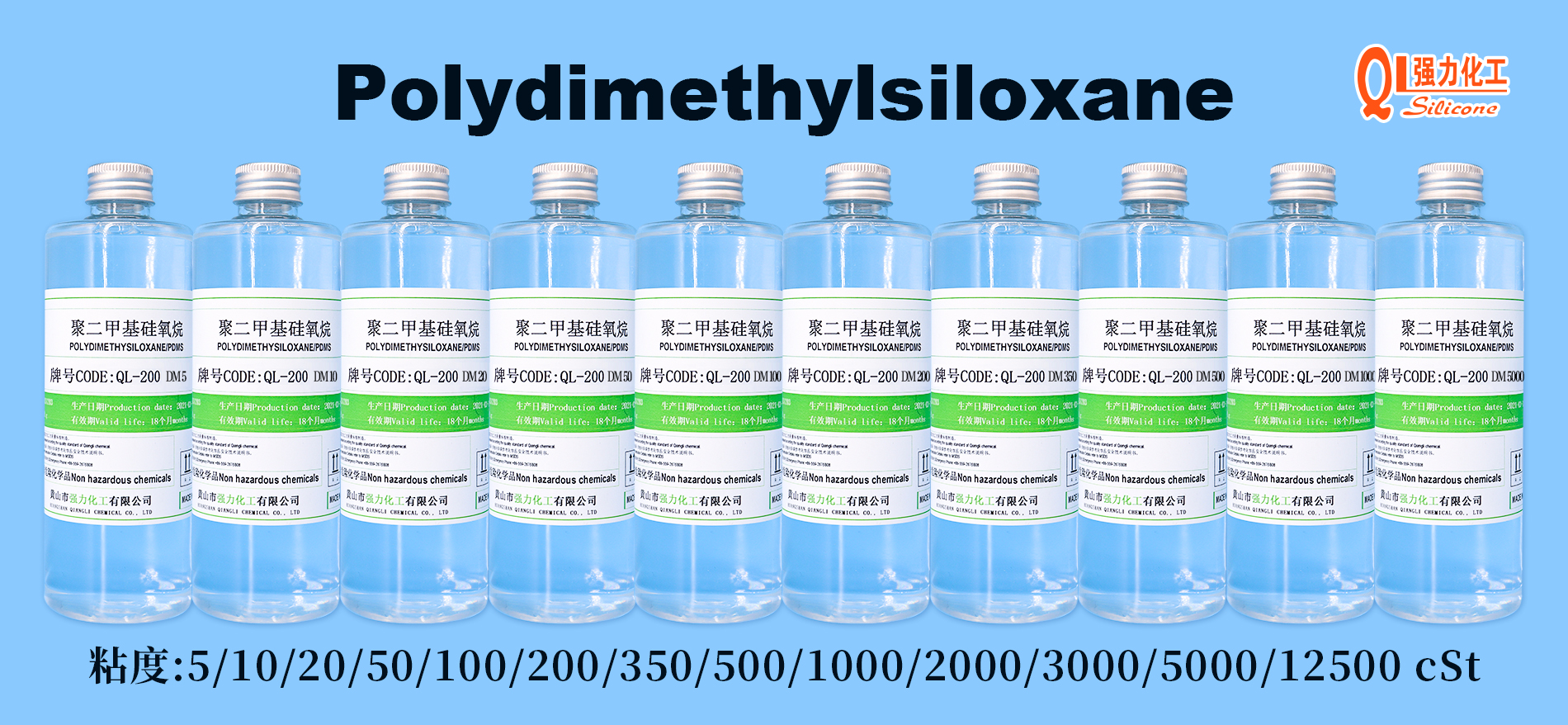
Silicone rubber has excellent high and low temperature resistance, ozone resistance, oxygen resistance, light resistance and weathering resistance, excellent electrical insulation properties, special surface properties, physiological inertia and high air permeability, and has a wide range of applications. However, the tensile strength and tear strength of silicone rubber are low, the acid and alkali resistance is poor, and the processing performance is also poor when manufacturing complex products. .
(1) By using the copolymerization (blending) of silicone and other monomers or polymers, a new polymer (blend) is obtained. For example, the block copolymer of silicone and polycarbonate can be used as a selective breathable membrane; the characteristics of the blend of silicone and ethylene-propylene rubber are between silicone rubber and ethylene-propylene rubber; blending silicone rubber with EVA, The prepared blend has excellent physical properties, electrical properties, high-temperature aging resistance and thermal shrinkage, and can be endowed with excellent flame-retardant properties through proper matching. Using high temperature resistant silicone rubber and high tensile strength PMMA to manufacture interpenetrating polymer grids, the strength of silicone rubber and the heat resistance of PMMA are improved, and polydimethylsiloxane (PDMS)/polystyrene is synthesized (PS) interpenetrating polymer network, which improves the mechanical and elastic properties of the silicone network.
(2) By improving the matching technology, develop new varieties with high strength, high tear resistance, low compression deformation, etc., as well as high-temperature resistance, ultra-low temperature resistance, flame-retardant, heat-conducting and heat-shrinkable silicone rubber.
Pure silicone rubber does not have the mechanical strength required for most applications and therefore requires reinforcement. The traditional reinforcement method is to add reinforcing fillers before the silicone rubber is cured, and then perform mixing, vulcanization and other processes. However, it is time-consuming, energy-consuming, pollutes the environment, and it is difficult to control the degree of dispersion and aggregation of fillers in the rubber compound. Studies have shown that fillers such as precipitated silica, precipitated titanium dioxide and ferrite, zeolite and alumina have a good reinforcing effect on silicone rubber.
(3) In terms of improving processing performance, silicone rubber without secondary vulcanization, granular silicone rubber (also known as powder rubber) and catalytic addition between vinyl-containing polysiloxane and hydrogen-containing siloxane have been developed. In response, a liquid injection molding system for silicone rubber was developed. Using the addition type two-component system, a putty-type mold-making silicone rubber with good thixotropy, excellent construction performance and convenient use is developed.
